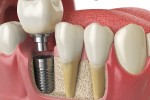Introduction
Large areolas are a natural variation, but some people feel self-conscious about their appearance. The areola is the darker skin surrounding the nipple, and its size can differ greatly. While perfectly normal, some individuals may prefer smaller or more proportionate areolas. Advances in cosmetic surgery now make this possible through a procedure called areola reduction. For those seeking improved confidence or symmetry, understanding available treatment options is key. Read on to discover what areola reduction involves and what the potential benefits can be.
Understanding Areola Size
Areola size varies widely due to genetics, hormonal changes, weight fluctuations, and breastfeeding. For some, large areolas are simply a natural trait. For others, changes occur over time, especially after pregnancy. While there is no medically ‘correct’ size - personal preference often drives interest in treatment. For many, smaller, more symmetrical areolas feel more aesthetically pleasing. Areola reduction is designed to create these results safely and effectively.
What is an Areola Reduction procedure?
Areola reduction is a surgical procedure that decreases the size of the areola. The aim is to maintain the natural shape. The operation is performed by removing a circular section of pigmented skin. The incision is usually hidden along the border of the areola for subtle scarring. The nipple remains attached to its original position, preserving sensation and function. Sutures secure the new shape, leaving the areola smaller and more proportional. Results can be tailored to patient preferences and are usually long-lasting.
Why People Choose Areola Reduction
There are many reasons individuals consider areola reduction. Some seek more balanced proportions between areola size and breast shape. Others wish to correct asymmetry where one areola is larger than the other. After breastfeeding, the areolas may stretch and lose their original appearance, motivating treatment. Patients undergoing breast augmentation or reduction often combine procedures for a complete transformation. Above all, the goal is to improve self-confidence and comfort in one’s body.
Areola Reduction Procedure Explained
The surgery begins with anaesthesia to ensure comfort. A circular incision is made around the edge of the areola. A small ring of excess pigmented skin is removed. The incision is then carefully closed with sutures, which maintain the areola’s new size. The technique preserves nipple sensitivity and breastfeeding ability. The procedure typically takes one to two hours and is often performed on an outpatient basis. Results are immediately visible, though final healing takes time.

Recovery After Areola Reduction
Recovery after this procedure is relatively straightforward. Patients may experience mild swelling or tenderness in the first few days. Dressings are applied, and stitches may be removed within a week or two. Light activities can resume quickly. However, strenuous exercise should be avoided, at least for several weeks. Wearing supportive bras during recovery helps protect the results. Scarring is usually minimal and fades over time, especially when following your surgeon’s aftercare advice. Most patients report feeling more confident and comfortable shortly after healing.
Combining Areola Reduction With Other Procedures
Areola reduction is frequently combined with other breast surgeries for more comprehensive results. For example, breast augmentation may be paired with areola reduction to create balanced proportions. In fact, breast reduction often includes areola resizing as part of the reshaping process anyway. Mastopexy, or breast lift, may also involve areola repositioning to match the new breast contour. Combining procedures helps achieve a harmonious, natural look, making treatment more efficient and effective.
Conclusion
Areola reduction is a safe and effective treatment for those who want smaller or more symmetrical areolas. The procedure is quick, results are long-lasting, and recovery is manageable. Combined with other breast surgeries, it offers even more transformative outcomes. Costs vary worldwide, but Turkey remains an attractive destination for affordable treatment. Ultimately, areola reduction helps patients feel more confident and comfortable.
For more information and to book a consultation visit the ACIBADEM Beauty Center webpage.
Frequently Asked Questions
The procedure usually takes one to two hours, depending on complexity.
No, sensation is usually preserved because the nipple remains attached during surgery.
Prices range from £1,200 in Turkey to £6,000 in the USA.
Yes, the results are long-lasting and typically permanent.
Yes, it is often combined with breast augmentation, reduction, or lift for balanced results.














